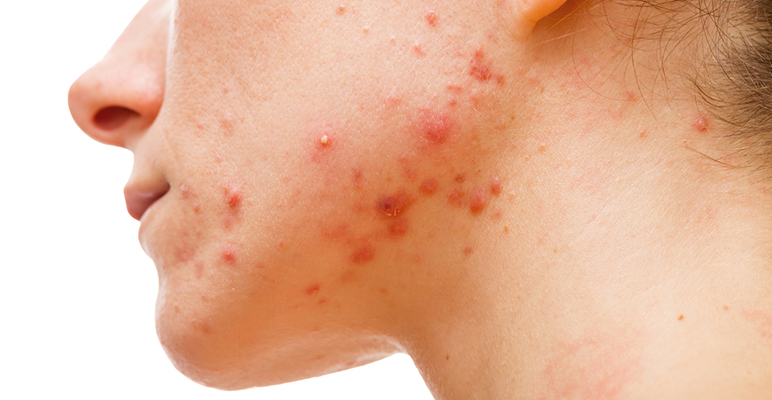
Acne
If you have a bad case of acne, you may feel like you are the only one, but you’re not alone. It is the most common skin problem in the United States. Most people who have acne are teenagers or young adults, but acne can occur at any age from newborn babies to middle aged women. Although it's common, accurate information about acne can be scarce. This can make it difficult to get clearer skin.
Acne lesions can include any of these blemishes, and can be on the face, chest and back:
◦ Open comedones (blackheads).
◦ Closed comedones (whiteheads).
◦ Inflamed papules (pink or red bumps).
◦ Pustules (what many people call pimples).
◦ Cysts.
◦ Nodules.
Acne appears when a pore in our skin clogs with dead skin cells and proteins. Normally dead skin cells rise to surface of the pore, and then they shed. When the body makes extra oil that keeps our skin from drying out, the dead skin cells can stick together inside the pore. Instead of rising to the surface, the cells become trapped inside the pore. Sometimes the normal bacteria that live on our skin, P. acnes, also get inside the clogged pore and multiply very quickly. With loads of bacteria inside, the pore becomes inflamed (red and swollen). If the inflammation goes deep into the skin, an acne cyst or nodule appears.
Treatment
◦ Many treatment options exist for acne including topical medications, medicated washes, medicated wipes, oral medications, and blue light treatments.
◦ Different treatments work for different people.
◦ Treating acne often boosts a person’s self-esteem and decrease depressed feelings.
◦ Without treatment acne lesions can leave dark spots and permanent scars.
◦ Most acne treatments begin to take effect after 4-12 weeks of consistent usage.
